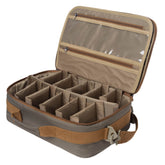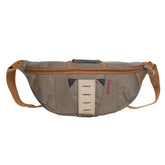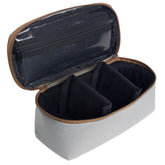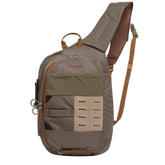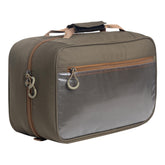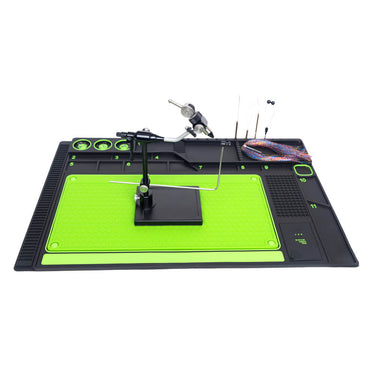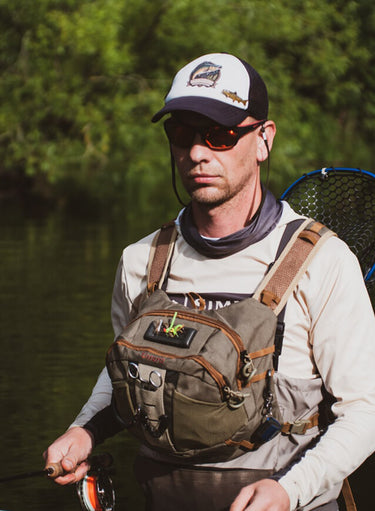Fly Line: A Comprehensive Guide to Switch Lines for Salmon Fishing
When it comes to salmon fishing, selecting the right switch line is crucial for a successful day on the water. Understanding how to set up a switch line properly can significantly enhance your casting distance and accuracy, particularly in smaller rivers and creeks. As someone who has spent countless hours refining my technique, I know the importance of matching the right line to your environment and fishing style.

Choosing the best switch lines means considering factors like water conditions and your target species. For winter fishing, looking for a line that performs well in colder temperatures can make all the difference in your catch rate. With options tailored for swinging flies or nymphing, knowing what to prioritize based on your fishing goals will help you make informed decisions.
Throughout this post, I will explore the best switch line options for small rivers, offer tips on setup, and share my insights on different techniques. This knowledge can help you navigate the learning curve of switch rod fishing effectively, allowing for a rewarding experience on the water.
Setting Up Your Switch Line

Setting up a switch line involves several key steps to ensure effectiveness in various fishing environments. I focus on the required configurations, line selections for specific water types, and the adaptations necessary for winter fishing scenarios.
Configuring a Switch Line for Salmon Fishing
When configuring a switch line for salmon fishing, I typically utilize a switch rod paired with a proper switch line. The switch line must have enough weight to deliver larger flies effectively.
I prefer a Skagit head for this purpose, as it provides the necessary mass for casting in challenging wind conditions. A reinforced running line allows for better management of casts, maximizing distance and accuracy.
I also attach a suitable leader that can handle the current and the weight of the fly. A sink tip provides depth when targeting salmon holding in deeper runs or structured areas.
Selecting the Best Switch Lines for Small Rivers and Creeks
In small rivers and creeks, I choose lighter switch lines that allow for precise control and accurate placements. Lines rated with mid-length heads are effective here, as they reduce the need for large backcasts.
I often consider options like the MOW tips for versatility. They add sink rates to the setup, suitable for various depths. When targeting eager trout or smaller steelhead, I can use a lighter setup to ensure a more delicate presentation.
Using a level running line helps minimize drag, allowing for smoother and more fluid casts. This ensures I maintain the stealth needed for skittish fish in tight areas.
Choosing the Right Switch Line for Winter Steelhead
Winter steelhead fishing requires adaptability, so I prioritize switch lines that handle colder conditions. A heavy Skagit head with a suitable sink tip is essential to reach fish holding deep in fast-moving water.
I find that lines designed specifically for winter use tend to perform well under harsh conditions. Here, the sink tip becomes crucial, allowing me to maintain contact with the fly even in turbulent currents.
Maintaining a balance between the head and running line can significantly affect casting. I ensure my setup allows for easy adjustments based on changing water levels and conditions so I can maximize each fishing trip’s potential.
Tactics and Techniques
In salmon fishing, employing the right tactics and techniques is crucial for success. I will discuss the differences between swinging flies and nymphing, emphasizing how to leverage switch lines effectively.
Differences Between Swinging Flies and Nymphing
When swinging flies, I often use a spey rod or a two-handed rod to present wet flies or streamers. This technique allows me to cover water efficiently while using a double spey cast or similar methods. The key is to maintain a steady tension in the line and allow the fly to swing naturally through the current.
Nymphing, on the other hand, typically requires a more focused approach. I often employ switch lines with sink tips to get the nymphs closer to the bottom. Adjusting the depth is vital for visibility, so I make sure to adjust my line accordingly. In nymphing, precision and subtlety in the presentation can lead to successful connections with fish.
Optimizing Gear and Casting Styles
Selecting the right gear and mastering casting techniques are essential for effective fishing with switch lines. This section delves into rod performance dynamics and the specific casting techniques that can enhance your fishing experience.
The Dynamics of Switch and Spey Rod Performance
When using a switch rod, understanding the performance characteristics is crucial. Switch rods are versatile, typically ranging from 10 to 11.5 feet, and can handle both single and double-handed casting styles. Long rods provide an advantage in line management, especially in tight spaces like small rivers and creeks.
My experience has shown that utilizing the proper line weight is essential. A Scandi head is ideal for lighter, more delicate presentations, while a Skagit head works well for heavier flies and tips in challenging conditions.
The right setup enhances control, casting distance, and accuracy. I prefer using integrated lines like the RIO Switch Line, which allows for smooth transitions between various casting styles. Optimizing my gear configuration improves targeting effectiveness, particularly for salmon.
Mastering Spey Casting Techniques with Various Lines
Mastering Spey casting techniques significantly increases my proficiency with switch lines. I focus on the single Spey and double Spey casts, both effective for covering water efficiently. The single Spey works well when I'm fishing against the current, helping me maintain control of the fly.
When using a Skagit head, I adjust my technique slightly to accommodate the heavier line. This involves using a more aggressive stroke to launch the line. Conversely, with a Scandi head, my focus is on a smoother, more rhythmic cast, which enhances line presentation.
In terms of line management, keeping a clean and organized workspace is essential. I often use a line tray to manage excess line when casting. Additionally, varying my casting angles based on current conditions helps maximize my chances of success with salmon and other species.



